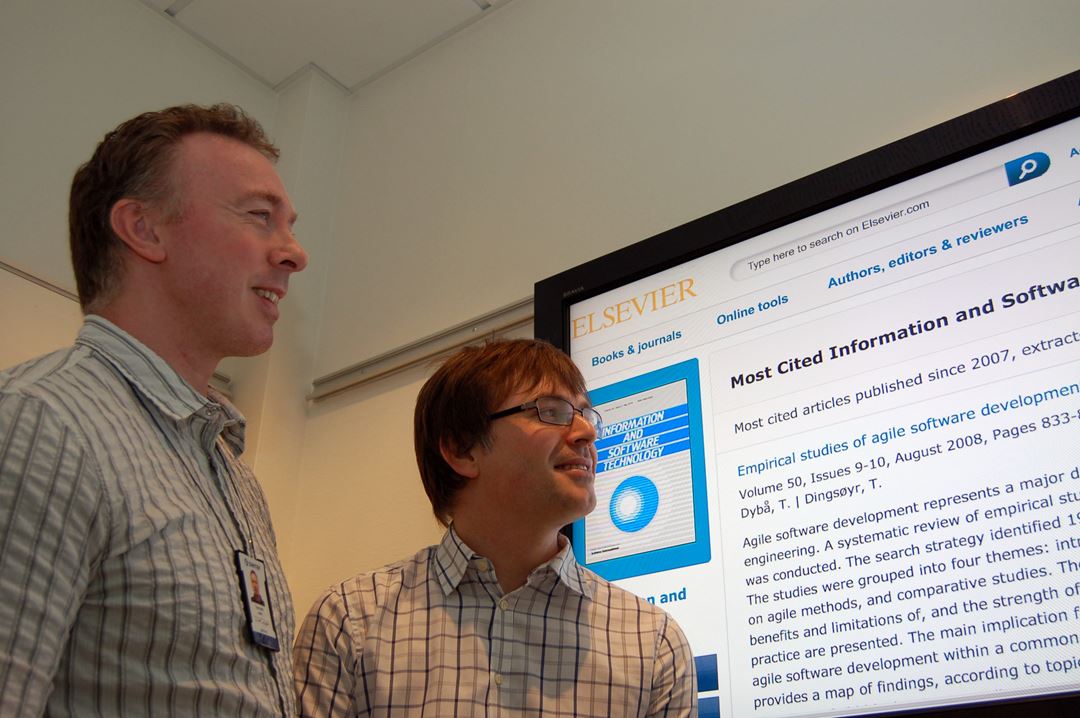SINTEF researchers Tore Dybå and Torgeir Dingsøyr wrote the article, which was published in the journal “Information and Software Technology”.
It has become the journal’s most frequently cited article in the past five years.
Now the authors’ research group has received another international distinction.
Next step: Centre of Excellence?
The group was given the second highest possible score (4 out of 5) in a recent evaluation of Norwegian ICT research; none of the university groups in this field obtained a better score.
The international expert group that performed the evaluation on behalf of the Research Council of Norway pointed to the fact that the group occupies a leading position in the field of empirical software engineering. The commission therefore proposed that the group should lead efforts to establish a Norwegian Centre of Excellence in this field.
All about “hot recipes”
The frequently cited article by Dyb�� and Dingsøyr appeared in 2008 and it describes how autonomous project groups are highly capable of following the software industry’s latest and “hottest” recipes; a technique that involves specifying, developing and testing software “bit by bit”.
In their journal article, the two SINTEF colleagues summarise what researchers know about the effects of using this methodology and what is needed to master it.
Agile software development
The software development strategy described in the article is known in the trade as “agile software development”.
The methodology was developed by a group of “self-appointed gurus” in the USA in 2001, as a response to several unsuccessful software development projects that had received a great deal of negative media coverage.
These fiascos occurred when large, complex software systems were developed as complete packages through long-term projects. By the time that the software was ready for delivery, the users’ needs had often changed.
Stepwise methodology
“The agile software development countermeasure consists of beginning at one end of the process; drawing up requirement specifications for only a section of the programme at a time, and then developing and testing that bit. Only when that has been done does the software developer start on the next bit,“ say Dybå and Dingsøyr.
Productive team and satisfied clients
The article discussed all the research that had been published up to and including 2005, and the effects of using this method – in terms of client satisfaction and productivity, among other measures.
"Although many of the projects we studied made high scores on these scales, some of them were not of sufficient quality to let us draw bombastic conclusions from our material,” say the researchers.
Further reading: Method goes hand in glove with Scandinavian conditions.
Recognised channel
“Information and Software Technology” is a level 2 journal, i.e. a top-drawer publication in terms of the Research Council of Norway’s publishing credits.
by Svein Tønseth

